Physical Address
304 North Cardinal St.
Dorchester Center, MA 02124
The tendons of the peroneus longus and brevis muscles are susceptible to developing tendinitis and tenosynovitis. These tendons are subjected to repetitive motion, which may result in microtrauma that heals poorly because of the tendons’ avascular nature. Eversion injuries during running and tennis often are implicated as the inciting factor of acute peroneal tendinitis. Tendinitis of the peroneal tendons frequently coexists with bursitis of the associated bursae of the ankle joint, creating additional pain and functional disability. Calcium deposition around the tendons and their tendon sheath may occur if the inflammation continues, making subsequent treatment more difficult ( Fig. 188.1 ). Continued trauma to the inflamed tendon ultimately may result in tendon dislocation or rupture ( Figs. 188.2 and 188.3 ).
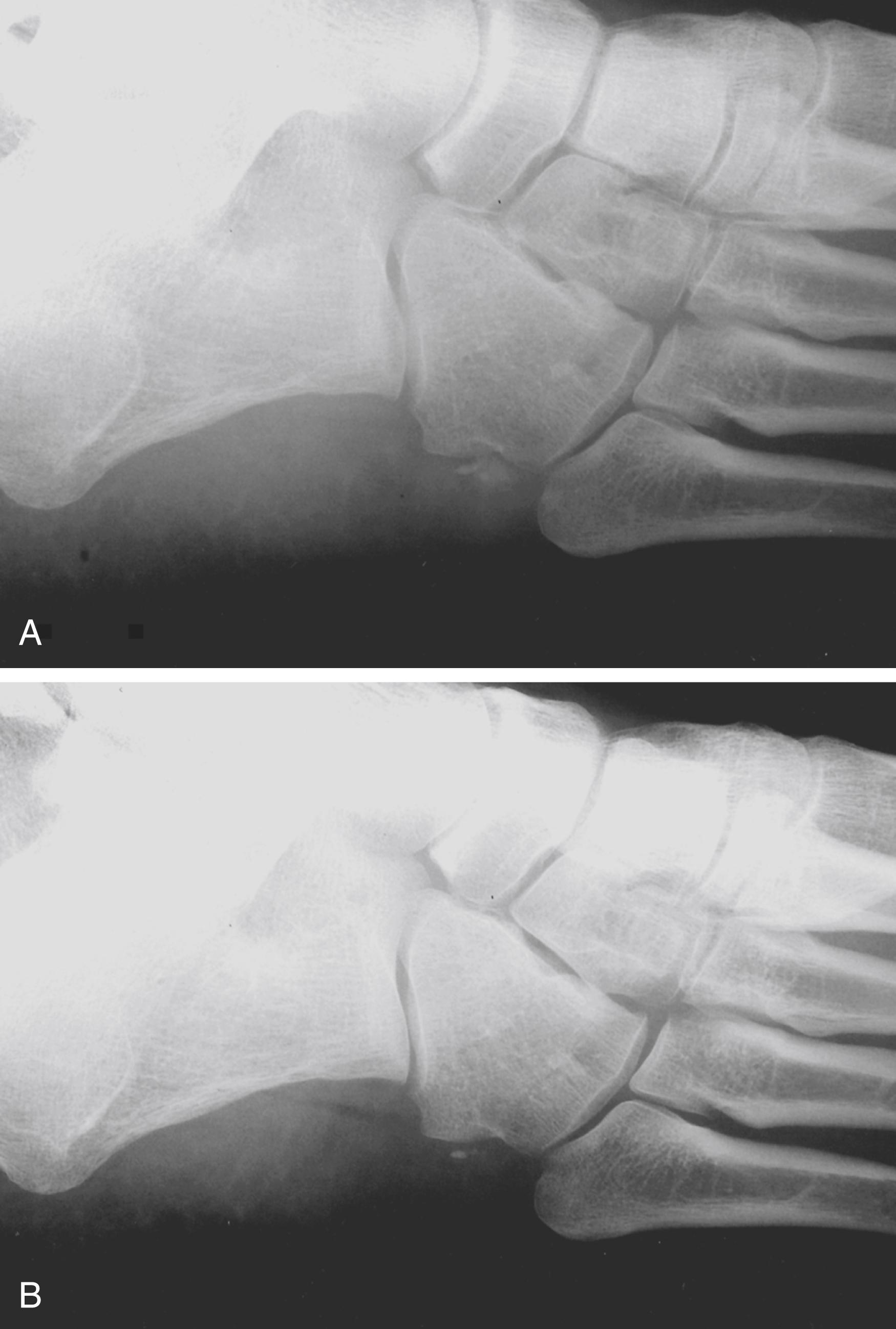
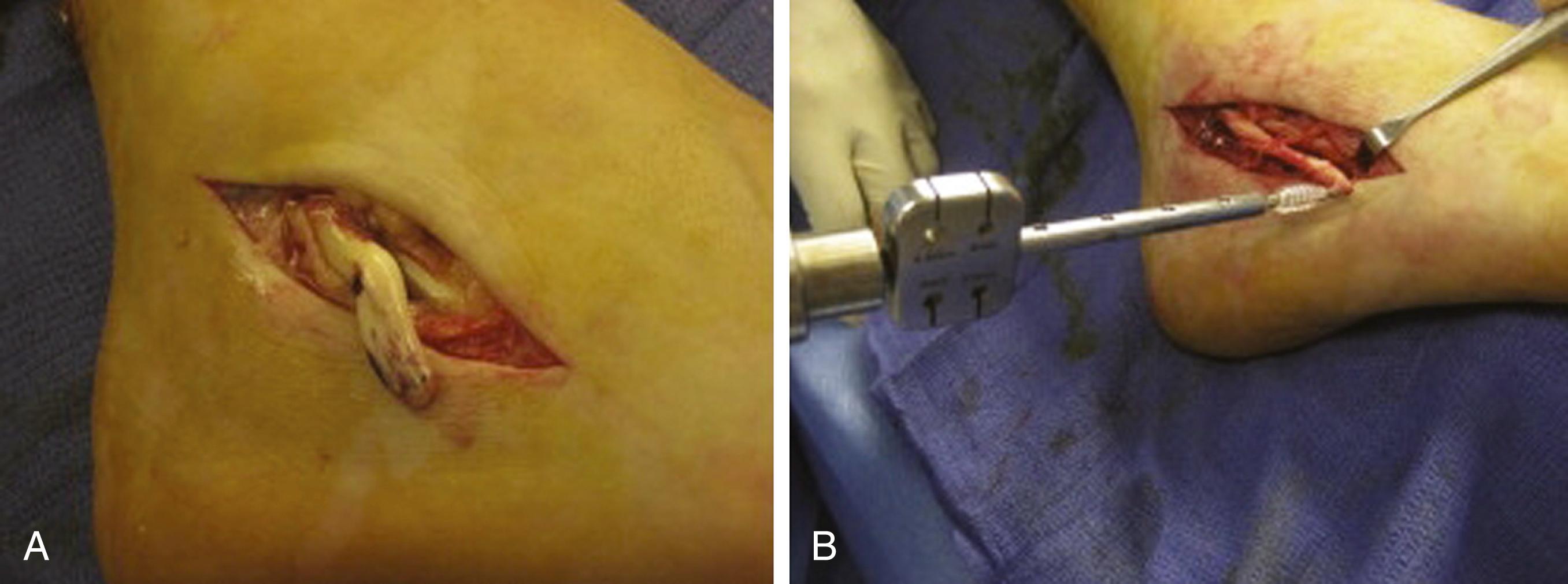
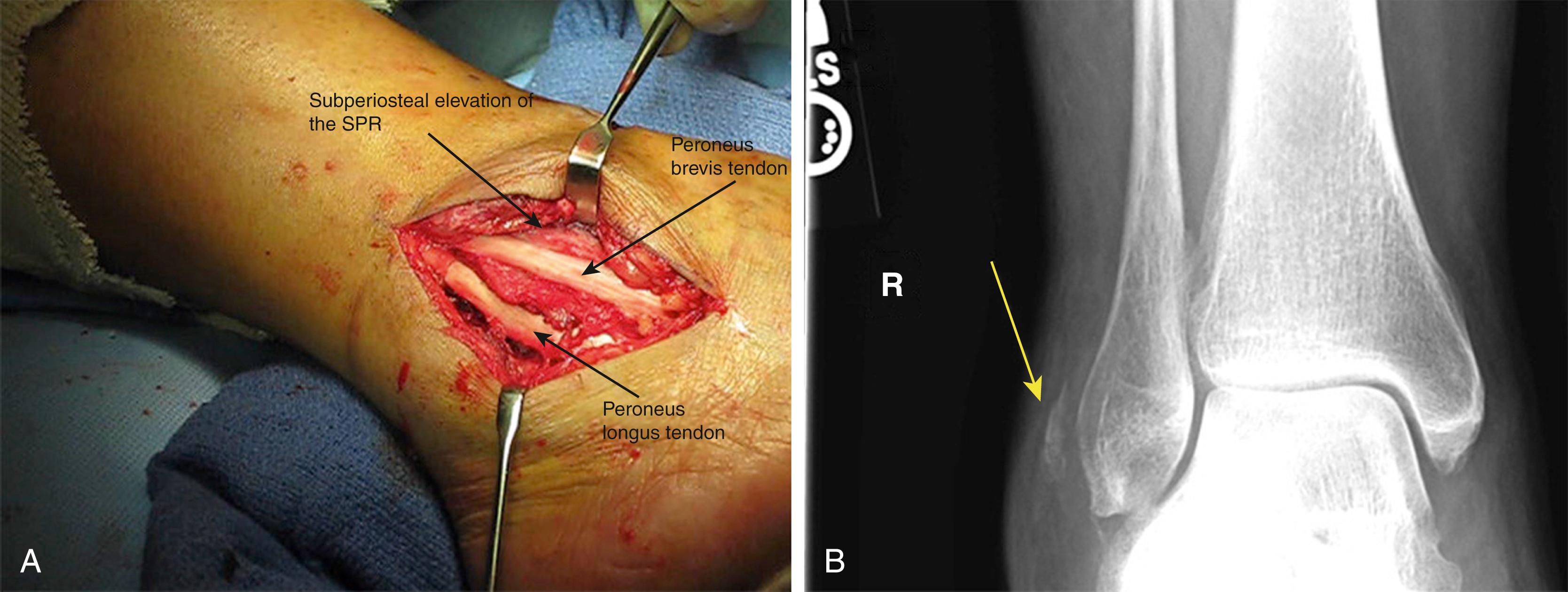
The onset of peroneal tendinitis usually is acute, occurring after overuse or misuse of the ankle joint. Inciting factors may include activities such as eversion injuries to the ankle during running or when playing tennis. Improper stretching of the peroneus longus and brevis muscles and tendons before exercise also has been implicated in the development of peroneal tendinitis, as well as acute tendon rupture. The pain of peroneal tendinitis is constant and severe and is localized in the posterior ankle. Significant sleep disturbance often is reported. Patients with peroneal tendinitis exhibit pain in the lateral ankle and foot with resisted eversion of the foot. Creaking or grating may be palpated when passively inverting the foot. As mentioned earlier, the chronically inflamed peroneal tendons may suddenly rupture with stress or during vigorous injection procedures into the tendon itself.
Plain radiographs are indicated for all patients with lateral ankle pain. On the basis of the patient’s clinical presentation, additional testing may be indicated, including complete blood cell count, sedimentation rate, and antinuclear antibody testing. Magnetic resonance imaging or ultrasound of the ankle is indicated if peroneal tendinitis, tear, rupture, and/or joint instability are suspected ( Figs. 188.4 and 188.5 ). Radionuclide bone scanning is useful for identifying stress fractures of the tibia not seen on plain radiographs. The injection technique described later serves as both a diagnostic and a therapeutic maneuver.
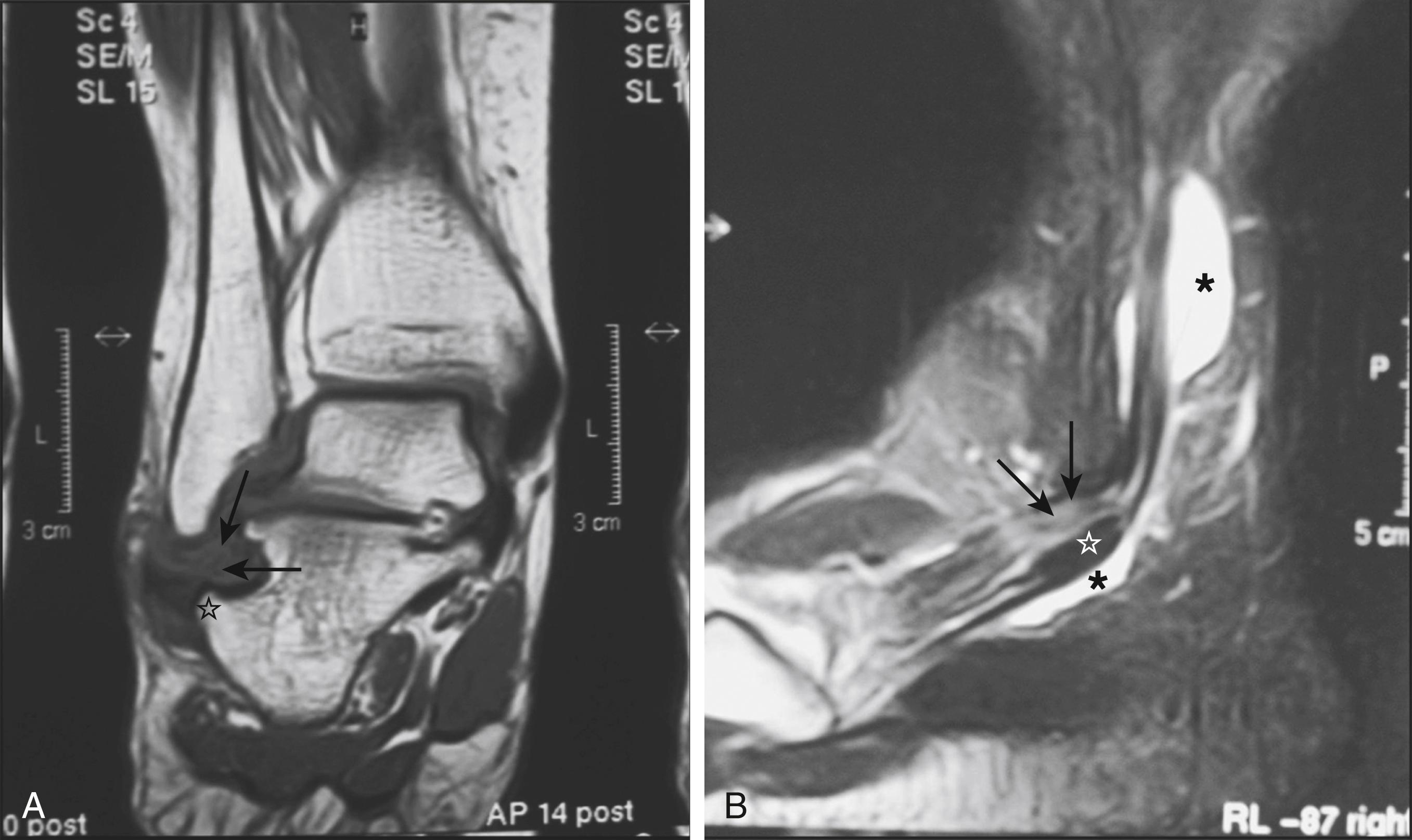
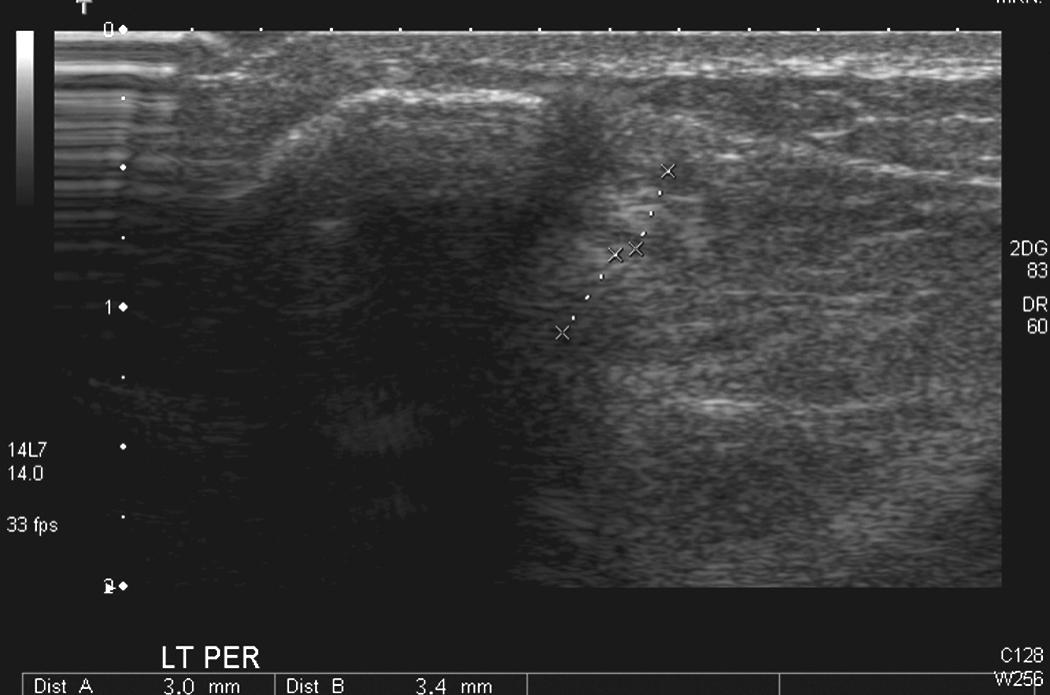
The peroneus longus and brevis muscles and their associated tendons run together in a single synovial sheath ( Figs. 188.6 and 188.7 ). The tendon of the peroneus longus muscle passes behind the lateral malleolus and then turns inward on the cubital bone to cross the sole of the foot to insert on the base of the first metatarsal. There may be a sesamoid bone at each turn of the tendon. The tendon of the peroneus brevis also passes behind the lateral malleolus and then turns forward along the lateral calcaneus above the tendon of the peroneus longus muscle to attach at the base of the fifth metatarsal.
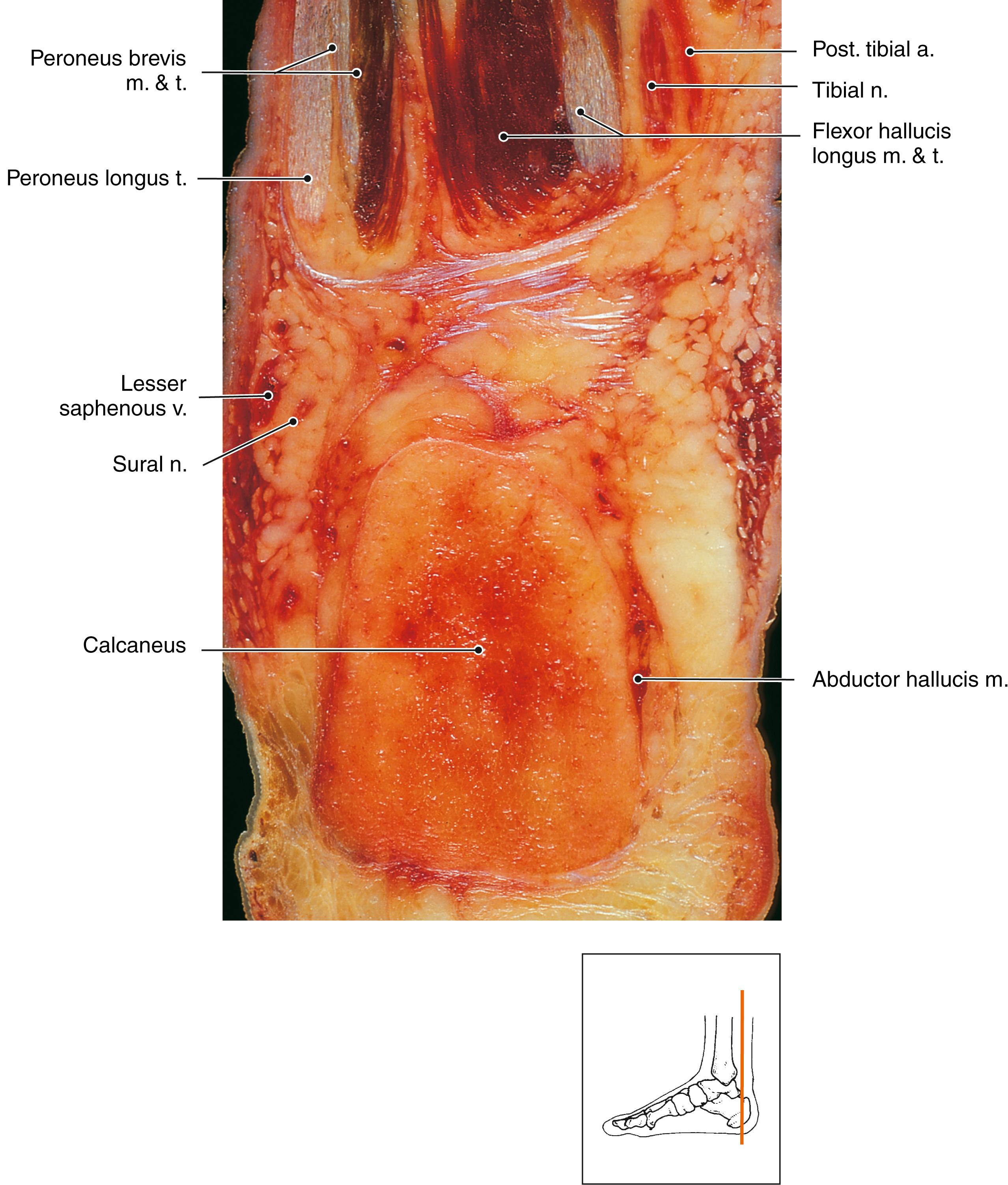
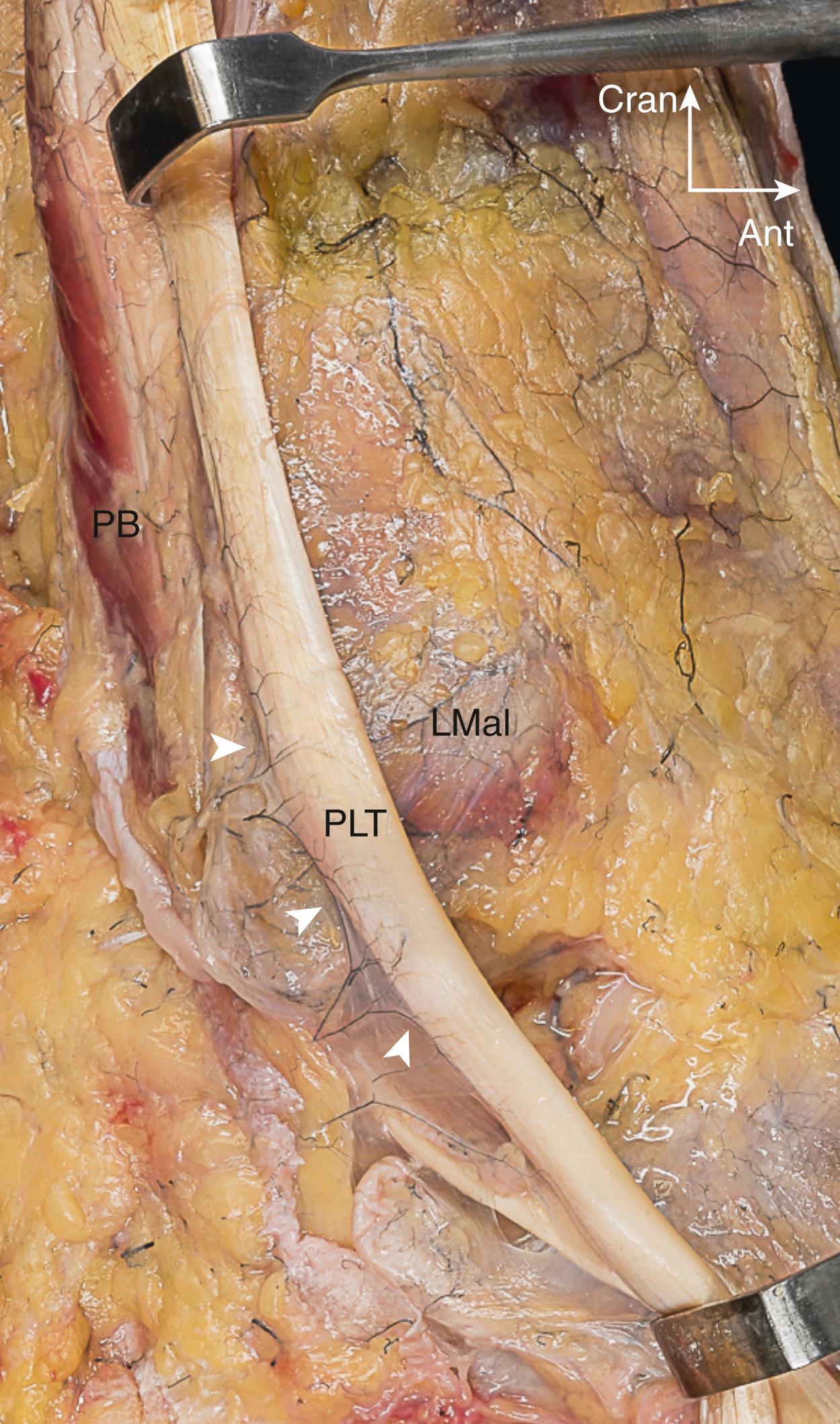
Become a Clinical Tree membership for Full access and enjoy Unlimited articles
If you are a member. Log in here